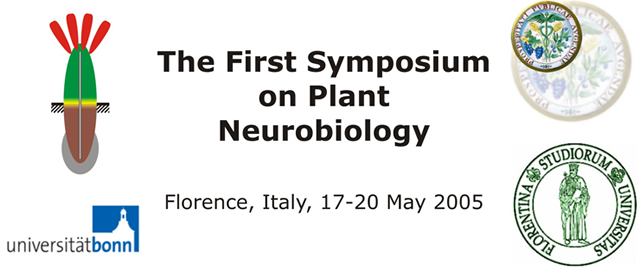|
Plants can perceive environmental
stimuli with exquisite sensitivity. Indeed, even the seemingly innocuous stimulus of touch can elicit
elaborate and unexpected responses in plants (reviewed in (1)). Plants use the sense of touch to capture prey,
enhance the likelihood of crosspollination and climb other objects to reach heights resplendent in sunshine.
Even nonspecialized plants respond to mechanical perturbations, such as wind and gravity, through
morphogenetic alterations. Darwin noted that plant roots turn and grow away from points of contact (2). Jaffe
coined the term thigmomorphogenesis to describe the touch-induced decreased elongation and enhanced radial
expansion of plant shoots (3).
Single cells, in addition to organisms, are likely to perceive and respond
to mechanical stimuli. To maintain turgor homeostasis, individual cells must sense turgor pressure and wall
integrity. In addition, subcellular organelles can translocate in response to mechanical perturbations.
Signaling molecules and hormones, including intracellular calcium, reactive oxygen species, octadecanoids and
ethylene have been implicated in touch responses.
Touch stimulation can also rapidly alter gene
expression regulation. The Arabidopsis thaliana TCH genes were discovered as genes
whose expression is upregulated in plants perturbed by touch or wind (4). The TCH genes encode
proteins predicted to function in calcium signal transduction and cell wall modification.
Recently, we investigated the prevalence of touch inducibility among plant genes (5) . Touch-induced gene
expression is surprisingly widespread; more than 2.5% of Arabidopsis genes are rapidly upregulated in
expression in touch-stimulated plants. In addition to encoding calcium-binding and cell wall modifying
proteins, the induced genes include many encoding proteins predicted to function in defense, as transcription
factors and as protein kinases. With these genes as tools, we are employing molecular genetic methods to begin
to elucidate mechanisms of touch perception, signal transduction and response regulation.
Research supported by: the National Science Foundation (IBN 0313432, IBN 0235953, IBN 9982654), and the
Department of Energy (DE-FG02-03ER15394)
- Braam, J., In touch: plant
responses to mechanical stimuli. New Phytol., 2005. : p. 373-389.
- Darwin, C., The power
of movement in plants. 1880, London: William Clowes and Sons, Ltd.
- Jaffe, M.J.,
Thigmomorphogenesis: The response of plant growth and development to mechanical stimulation. Planta, 1973.
114: p. 143-157.
- Braam, J. and R.W. Davis, Rain-, wind- and touch-induced expression of
calmodulin and calmodulin-related genes in Arabidopsis. Cell, 1990. 60: p. 357-364.
- Lee, D., D.H. Polisensky, and J. Braam, Genome-wide identification of touch- and darkness-regulated
Arabidopsis genes: a focus on calmodulin-like and XTH genes. New Phytol., 2005. 165: p. 429-444.
|

